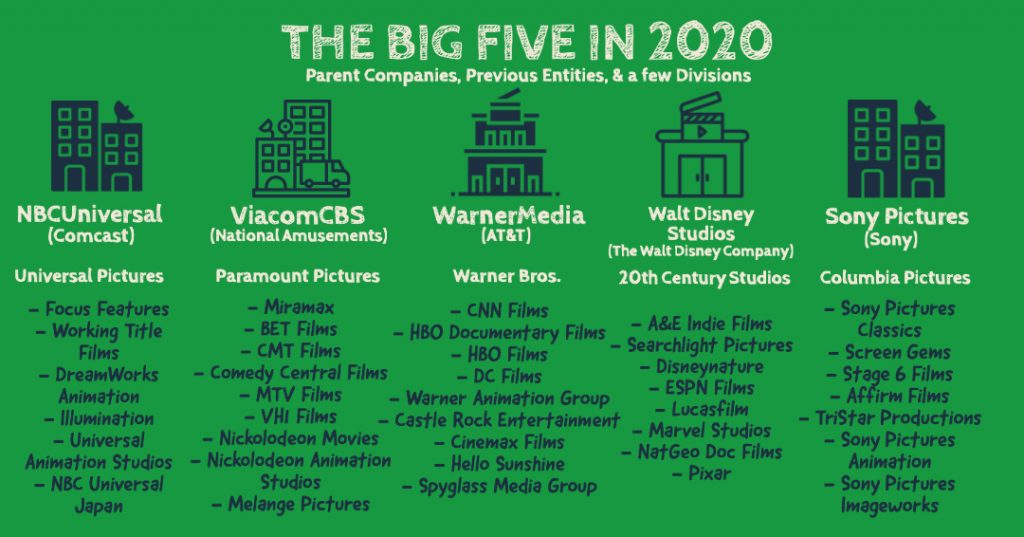As we know, Hollywood is the home where many go to visit, admire, revel, start a life to pursue dreams, and where the Big Five started. Long before these dreamers flocked to Hollywood, movie makers made their way to sunny California for 2 reasons. Its beautiful weather year round giving more options to shoot outside offering natural sunlight necessary to expose film for production; and to escape Thomas Edison’s Motion Picture Patents Company which controlled almost all of the industries patents to produce content. Their base being in New Jersey made it a lot harder to enforce its patents.
By Hollywood’s Golden Age in the 1920’s, 5 Studios were well established, making their own movies, keeping personnel on long-term contracts, having their own distribution divisions, and theaters.
- -RKO Radio Pictures
- -20th Century Fox
- -Paramount Pictures
- -Metro-Goldwyn-Mayer
- -Warner Bros.
This was looked at as a monopoly later challenged by independent producers in the United States vs. Paramount Pictures, Inc. also known as the Paramount Decree. The case lasted for years eventually ruling against the major studios. Received with resistance they came around and found that sharing control of film production with renting of facilities to independent producers, becoming backers of projects in exchange for distribution rights, and surrendering to the trend of entertainment moving towards television found to be very lucrative. Studios began selling or leasing their older films to TV syndication companies while turning their focus on movies for television. The growth of viewing movies from home declined the attendance of movie goers leaving them vulnerable to company acquisitions, changing the players in the game. Over the years, the tiers and status of many studios changed with everyone vying to be a part of the “majors”. The following six were named in 1986:
- -Paramount Pictures
- -Warner Bros.
- -Columbia
- -Universal
- -Fox
- -MGM / United Artists (merged in 1981)
Disney has always been a contender amongst Studios starting in animation with a focus on family movies that kept it a tier below. By the 90’s into the 2000’s, there were many acquisitions and bidding wars bringing the “Big Five” back in 2019. A major deal that started when Comcast acquired Universal Studios in 2013, caught wind of The Walt Disney Company wanting to purchase 21st Century Fox. Which includes 20th Century Fox, Fox Searchlight Pictures, and Blue Sky Studios. Finally out bidding Comcast, Disney won therefore ending the era of the “Big Six” studios and Fox as a major for 83 years.
The “Big Five” in 2020:
- -NBCUniversal (Comcast) – Universal Pictures
- -ViacomCBS (National Amusements) – Paramount Pictures
- -WarnerMedia (AT&T) – Warner Bros.
- -Walt Disney Studios (The Walt Disney Company) – Walt Disney Pictures
- -Sony Pictures (Sony) – Columbia Pictures
In most recent events, a ruling given on August 7, 2020 has ended the Paramount Decree which was in litigation for 10 years and banned certain practices such as block booking for 72 years. This may mean that major studios can strike up deals with theater chains giving them unforeseeable power once again. This is an interesting outcome in the industry and we are curious what this means and the effects it will have on the independent circuit. Stay tuned!

